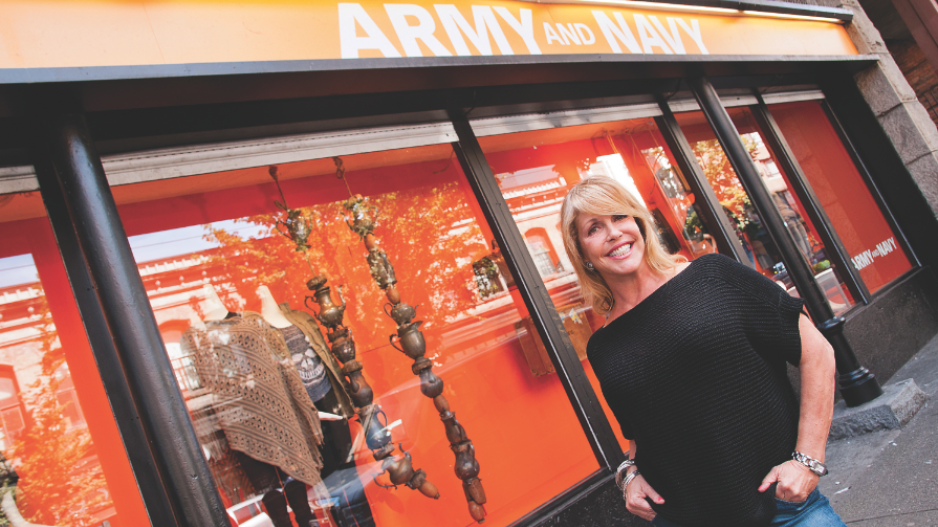Retailers have started to see a bump in sales as back-to-school shopping gears up and a weak Canadian dollar lures Americans north and keeps Canadian shoppers at home.
The Canadian dollar closed at 75.94 cents (U.S.) on August 21, which is near an 11-year low.
An EY report earlier this month projected that Canadian retailers will see a 4% increase in sales this back-to-school shopping season, partly spurred by inflation caused by the weak dollar.
“Consumers will have additional disposable income boosted by the recent [expanded] universal child-care benefit payments, lower gas prices and low interest rates,” said Daniel Baer, who is an EY partner and the Canadian retail and consumer products sector leader.
“On the other hand, inflation, higher housing costs and economic uncertainty will dampen consumers’ urge to spend.”
Executives at B.C. retail chains that sell products popular with back-to-school shoppers say they have already noticed a rise in sales.
“Our Langley store is the one most affected by cross-border shopping, and we’ve seen an increase in sales at that store in particular,” Army & Navy owner Jacqui Cohen told Business in Vancouver.
“We have stationery and school supplies but we’re more apparel-driven when it comes to back-to-school shopping.”
Cohen passes on higher prices to customers when she has to, but her buyers are negotiating hard with suppliers to eke out discounts.
Her buyers this week were in Las Vegas for the MAGIC show, which is a large fashion trade show for discount retailers.
“One buyer was telling me that he was factoring in a 35% premium on the U.S. prices to cover the exchange, duties and shipping but it will now be about a 40% premium,” Cohen said. “He told me, ‘I’ll just have to go back to our suppliers and grind them for another 5%.’ That’s how we roll.”
Both Cohen and London Drugs COO Clint Mahlman say most of their suppliers are Canadian and that increases due to currency fluctuation are already priced in when they buy products.
“For traditional back-to-school supplies that don’t sell much outside of the initial purchasing period – Duo-Tangs, pencil crayons, pens, markers – those items were all purchased several months ago,” Mahlman said.
“So customers are getting the advantage of what the prices for those items were when the Canadian dollar was stronger.”
Items such as printer ink, which Mahlman describes as being “highly consumable” and not seasonal, have likely already increased.
“We don’t speculate on currency,” he added.
“More than 90% of our products are purchased in Canadian dollars from Canadian suppliers. Their sourcing is often influenced by events outside Canadian borders because so much manufacturing is done overseas. Our costs are then inflated. Manufacturers are quick to pass on cost increases and slow to pass along savings when the dollar goes the other way.”
Employees at McArthurGlen’s designer outlet mall near Vancouver International Airport regularly count U.S. licence plates in the parking lot to figure out the new shopping centre’s customer demographics.
“Of 4,000 cars in our parking lot last weekend, 275 were from the U.S.,” said that mall’s general manager, Robert Thurlow earlier this week.
“That’s about 15% more than what it was in mid-July when we opened.”




